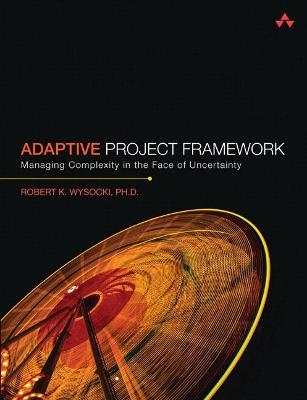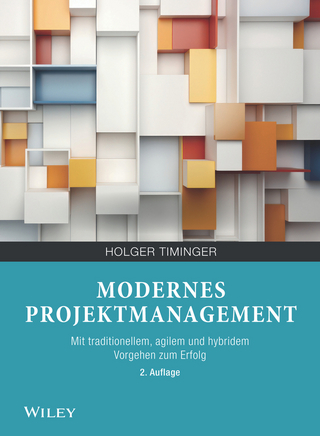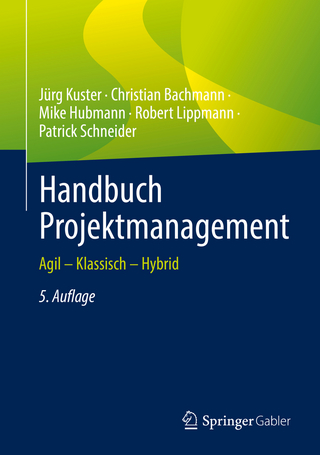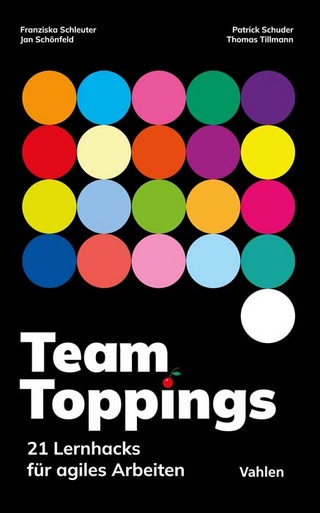
Adaptive Project Framework
Addison-Wesley Educational Publishers Inc (Verlag)
978-0-321-52561-1 (ISBN)
For an increasing number of critical projects, traditional project management models simply are not appropriate. In many cases, complete requirements and objectives cannot be specified up front, and significant changes cannot be avoided. What’s needed is an entirely new framework for project management: one that combines agile methods with the profession’s most enduring best practices. In this book, Robert K. Wysocki provides that framework–the Adaptive Project Framework (APF)–and shows how to apply it in any domain.
Wysocki, one of the world’s leading project management consultants, has spent decades helping large organizations succeed with complex projects. Drawing on everything he’s learned, he explains why a fundamentally new framework is needed and introduces all five phases of that framework. He covers artifacts, processes, and deliverables, and shows how to utilize each phase most effectively in your environment. Through four detailed case studies, you’ll discover how APF can help you adapt to unexpected events, encouraging creative responses based on open partnerships between clients and project teams.
Coverage includes
Bringing greater flexibility and speed to any project, regardless of its goals or context
Moving forward successfully with projects that have vague requirements
Discovering what clients really want, not just what they say they want
Managing ongoing scope changes throughout a project
Customizing APF to your own environment
Integrating APF with existing agile software development methods
Using APF to overcome the obstacles to success
Preparing for the future of project management
This book is written for every project participant–project and program managers, software and product developers, process designers, and business analysts–who needs to deliver results in a world that won’t stand still.
Robert K. Wysocki, Ph.D., has more than forty years of experience as a project management consultant and trainer, information systems manager, systems and management consultant, author, and training developer and provider. His sixteen books on project and IT management include the PMI-recommended Effective Project Management, Fifth Edition (Wiley, 2009). In 1990, Robert founded Enterprise Information Insights, Inc. (EII), a consulting and training practice that specializes in helping large organizations run projects more effectively. His clients range from AT&T and Aetna to the U.S. Army Signal Corps, Wal-Mart, and Wells Fargo.
Preface xv
Acknowledgments xvii
About the Author xix
Introduction 1
The Contemporary Project Landscape 2
Project Management Is Organized Common Sense 18
Why I Wrote This Book 20
How This Book Is Structured 21
Case Studies 21
Who Should Read This Book? 24
Putting It All Together 27
Chapter 1: Overview of the Adaptive Project Framework 29
The Fundamentals of the Adaptive Project Framework 30
Goal, Solution, Functions, and Features 34
Traditional Project Management (TPM) 37
Agile Project Management (APM) 43
Case Study: Try & Buy Department Stores–DSDM Approach 58
Adaptive Project Framework 58
Case Study: PDQ Prioritized Scope Triangle 85
Extreme Project Management 89
Emertxe Project Management 90
Putting It All Together 91
Discussion Questions 91
Chapter 2: How to Scope the APF Project 93
Overview of the APF Version Scope Phase 94
APF Version Scope Phase: The Defining Process 98
Case Studies 110
APF Version Scope: Planning Process 128
Version Scope Phase Kick-off Meeting 141
Team Formation 142
Putting It All Together 143
Discussion Questions 143
Chapter 3: How to Plan an APF Cycle 145
An Overview of the APF Cycle Planning Phase 146
APF Cycle Plan Deliverables 161
Cycle Scope Changes 176
Issue Tracking and Resolution 177
Micromanaging an APF Cycle 178
Case Study: Try & Buy Department Stores 180
Case Study: Pizza Delivered Quickly 182
Putting It All Together 188
Discussion Questions 188
Chapter 4: How to Build the APF Cycle 189
Overview of the Cycle Build Phase 190
Cycle Build Variations 212
Case Study: Kamikazi Software Systems 214
Putting It All Together 215
Discussion Questions 215
Chapter 5: How to Manage the Client Checkpoint 217
An Overview of the APF Client Checkpoint Phase 218
Client Checkpoint Questions 229
Major Inputs to the Next Cycle Planning Activity 234
Artifacts of the Client Checkpoint Phase 237
Next Cycle 245
Client Checkpoint Variations 246
Case Study: PDQ 246
Putting It All Together 251
Discussion Questions 252
Chapter 6: How to Conduct the Post-version Review 253
Overview of the APF Post-version Review Phase 255
Major Questions for the Post-version Review Phase 256
Lessons Learned 259
Improvement Opportunities 261
Post-version Final Report 264
Case Study: Snacks Fifth Avenue–Kiosk Design 265
Case Study: Kamikazi Software Systems–Systems Development Project Management Process Design 266
Case Study: Pizza Delivered Quickly–Order Entry and Home Delivery Process Design 267
Case Study: Try & Buy Department Stores–Curriculum Design, Development, and Delivery 268
Putting It All Together 269
Discussion Questions 269
Chapter 7: Adapting APF 271
APF Is Flexible and Adaptive 271
Variations 272
Putting It All Together 282
Discussion Questions 283
Chapter 8: APF in the Extreme 285
Defining an Extreme Project 286
Extreme Project Life Cycle 290
A Variation of an Extreme Project: The Emertxe Project 305
Comparing xPM and MPx PMLC Models 306
Putting It All Together 307
Discussion Questions 307
Chapter 9: APF Frequently Asked Questions 309
APF Is a Work in Process 309
You Mean I’m Going to Ask My Clients for $1M and One Year, and I Can’t Tell Them What They Will Get? 310
Can the Clients Increase the Budget or Deadline? 312
What if You Can’t Get the Client to Be Meaningfully Involved? 313
How Much Planning Do You Do Up Front for the Contents of the First Few Cycles? 316
What if the Team Is Resistant to APF? 317
Can a Distributed Team Use APF? How? 317
Can Part of a Project Use APF? How? 319
Do You Have to Worry about Micro-management? 319
How Do You Implement APF in an Organization Heavily Invested in TPM? 320
Putting It All Together 321
Chapter 10: Taking Stock 323
Organizational Environment 324
Making Choices 324
Prioritization Rules 325
Value of the Project Landscape Model 325
The Current State of APF 325
Implementing APF in Your Organization 330
Putting It All Together 334
Discussion Questions 334
Appendix: CareerAgent Overview 335
CareerAgent Functions 335
The Architecture of CareerAgent 336
Index 343
| Erscheint lt. Verlag | 11.2.2010 |
|---|---|
| Verlagsort | New Jersey |
| Sprache | englisch |
| Maße | 179 x 22 mm |
| Gewicht | 598 g |
| Themenwelt | Wirtschaft ► Betriebswirtschaft / Management ► Projektmanagement |
| ISBN-10 | 0-321-52561-2 / 0321525612 |
| ISBN-13 | 978-0-321-52561-1 / 9780321525611 |
| Zustand | Neuware |
| Informationen gemäß Produktsicherheitsverordnung (GPSR) | |
| Haben Sie eine Frage zum Produkt? |
aus dem Bereich


